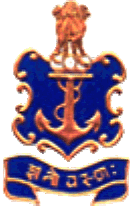|
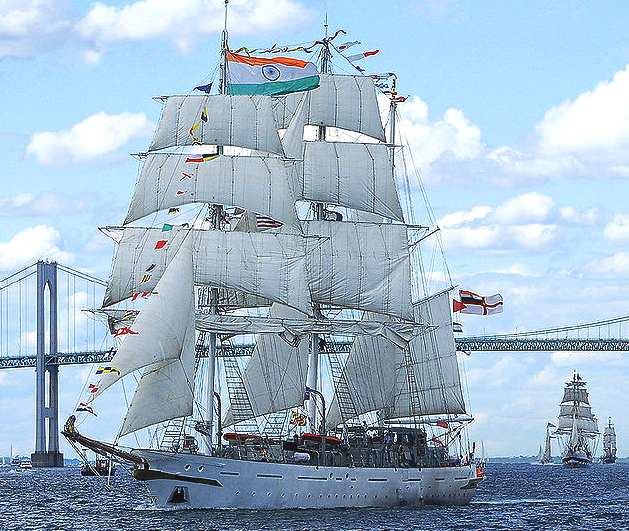
INS
Tarangini, Indian Navy barque sailing ship
The Indian Navy (Devanāgarī:
भारतीय नौ
सेना, Bhāratīya Nau Senā) is the naval branch of the armed forces of India. The President of
India serves as the Commander-in-Chief of the Navy. The Chief of Naval Staff (CNS), usually a four-star officer in the rank of admiral, commands the navy. The Indian Navy can trace its lineage back to the Royal Indian Navy, however the modern navy as it is known today was not officially created until 1947 after independence was gained from the United Kingdom. The 17th century Maratha emperor Chhatarpati Shivaji Bhosle is considered as the 'father of the Indian Navy'.
Though the primary objective of the navy is to secure the nation's maritime borders, India also uses its navy to enhance its international relations through joint exercises, port visits and humanitarian missions, including disaster relief. In recent years, the Indian Navy has undergone rapid modernisation to replace its ageing equipment currently in service, this is often seen as part of "India's drive" to develop blue-water capabilities and enhance its position in the Indian Ocean region. As of 2013, the Indian Navy has a strength of 58,350 personnel and a large operational fleet consisting of; an aircraft carrier, an amphibious transport dock, eight guided missile destroyers, 15 frigates, one nuclear attack submarine, 14 conventional submarines, 24 corvettes, 30 patrol vessels, 7
mine
countermeasure vessels and various auxiliary ships.
INS
SINDHURAKSHAK NUCLEAR SUBMARINE SINKING - AUGUST 2013
RECENT HISTORY
In the 21st century, the Indian Navy has played an important role in maintaining peace for
India on the maritime front, in spite of the state of foment in its neighbourhood. It has been deployed for humanitarian relief in times of natural disasters and crises across the globe, as well as to keep India's maritime trade routes free and open.
The Indian Navy was a part of the joint forces exercises, Operation Parakram, during the 2001–2002 India–Pakistan standoff. More than a dozen warships were deployed to the northern Arabian Sea. In 2001, the Indian Navy took over operations to secure the Strait of Malacca, to relieve
US Navy resources for Operation Enduring Freedom.
The navy plays an important role in providing humanitarian relief in times of natural disasters, including floods, cyclones and tsunamis. In the aftermath of the 2004 Indian Ocean earthquake and tsunami, the Indian Navy launched massive disaster relief operations to help affected Indian states as well as Maldives, Sri Lanka and Indonesia. Over 27 ships, dozens of helicopters, at least 6 fixed-wing aircraft and over 5000 personnel of the navy were deployed in relief operations. These included Operation Madad in Andhra Pradesh and Tamil Nadu, Operation Sea Waves in the Andaman and Nicobar Islands, Operation Castor in Maldives, Operation Rainbow in Sri Lanka and Operation Gambhir in Indonesia. This was one of the largest and fastest force
mobilizations that the Indian Navy has undertaken. Indian naval rescue vessels and teams reached
neighboring countries less than 12 hours from the time that the tsunami hit. Lessons from the response led to decision to enhance amphibious force
capabilities, including the acquisition of Landing Platform Docks such as the INS Jalashwa (L41), as well as smaller amphibious vessels.
During the 2006 Israel-Lebanon conflict, the Indian Navy launched Operation Sukoon to evacuate 2,286 Indian nationals and expatriates, besides 436 Sri Lankan and 69 Nepali citizens, from war-torn Lebanon. In 2006, Indian naval doctors served for 102 days on board USNS Mercy to conduct about medical camps in Philippines, Bangladesh, Indonesia and East Timor. In 2007, Indian Navy supported relief operations for the survivors of Cyclone Sidr in Bangladesh. In 2008, Indian Naval vessels were the first to launch international relief operations for victims of Cyclone Nargis in Myanmar.
In October 1999, a coordinated effort by the Indian Navy and the Indian Coast Guard led to the rescue of pirated
Japanese cargo ship, MV Alondra Rainbow.
In 2008, the navy deployed INS Tabar (F44) and INS Mysore (D60) into the Gulf of Aden to combat piracy in Somalia. Tabar prevented numerous piracy attempts, and escorted hundreds of ships safely through the pirate-infested waters. The navy also undertook anti-piracy patrols off Seychelles, upon that country's request. In 2011, the navy launched Operation Island Watch to deter piracy attempts by Somali pirates off the Lakshadweep archipelago. This operation has had numerous successes in preventing
pirate attacks. On 14th August 2013, the submarine INS Sindhurakshak sank in Bombay Dockyard due to explosions aboard.
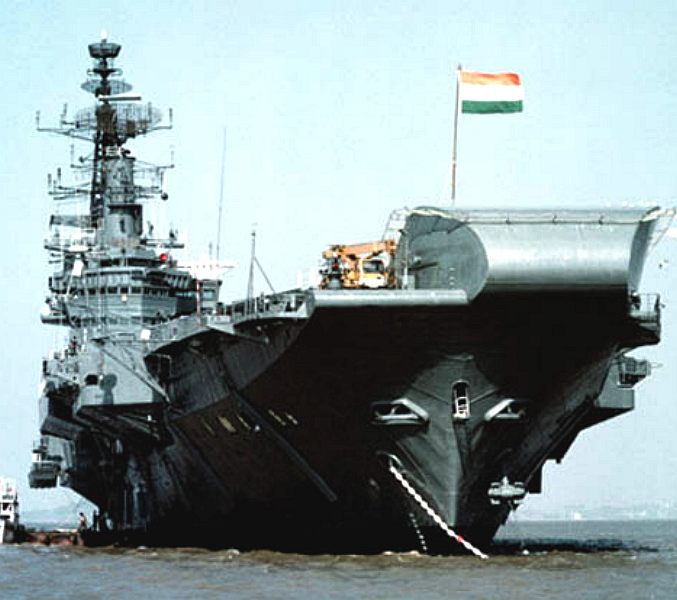
One
of the oldest serving aircraft carriers: INS Viraat
SHIPS & SUBMARINES
The names of all in service ships (and Naval Bases) of the Indian Navy are prefixed with the letters INS, designating Indian Naval Ship or Indian Navy Station. The fleet of the Indian Navy is a mixture of domestic built and foreign vessels. The Indian Navy presently has one aircraft carrier in active service, the INS Viraat. The carrier is planned for decommissioning after the induction of the first domestically built Vikrant class aircraft carrier. The Indian Navy will also commission the Russian-built INS Vikramaditya and sail it back to India by early 2014. It is expected to join active service by December 2013. The Indian Navy has an amphibious transport dock of the Austin class, re-christened as INS Jalashwa in Indian service. Besides, it also maintains a fleet of landing ship tanks. It is expected that four LPD amphibious assault ships are to be constructed in the future.
The navy currently operates three Delhi and five Rajput class guided-missile destroyers. The Delhi and Rajput class destroyers will be replaced in the near future by the next-generation Kolkata class (Project 15A destroyers). Seven vessels are expected to be commissioned starting in 2012. In 2011, the Indian government gave the go-ahead for an additional four improved Kolkata class destroyers (Project 15B destroyers). In addition to destroyers, the navy operates several classes of frigates such as three Shivalik (Project 16 class) and five Talwar class frigates. Seven additional Shivalik class frigates (Project 17A class frigates) are on order and last Talwar class frigate has been commissioned on 29 June 2013. The older Brahmaputra class and Godavari class frigates will systematically be replaced one by one as the new classes of frigates are brought into service over the next decade. The last remaining Nilgiri class frigate has been decommissioned on 27 June 2013.
Smaller littoral zone combatants in service are in the form of corvettes, of which, the Indian Navy operates the Kora, Khukri, Veer and Abhay classes corvettes. The next-generation Kamorta class of corvettes are currently under development with the first commissioning expected during late 2013. The Navy also plans to introduce stealthy trimaran vessels that can be modified according to mission requirements.
Replenishment tankers such as the Jyoti class tanker, the Aditya and the new Deepak class fleet tankers help improve the navy's endurance at sea. The Deepak class tankers will be the mainstay of the replenishment fleet until the first half of the 21st century.
DRDO DEFENCE RESEARCH & DEVELOPMENT ORGANISATION
Sangraha is a joint electronic warfare programme of the Defence Research and Development Organisation (DRDO) and the Indian Navy. The system comprises a family of electronic warfare suites, such as Ajanta and Ellora, for use on different naval platforms capable of intercepting, detecting, and classifying pulsed, carrier wave, pulse repetition frequency agile, frequency agile and chirp radars. The systems employ a modular approach facilitating deployment on various platforms like helicopters, vehicles, and small ships. Certain platforms, apart from ESM (electronic support measures), have ECM (electronic countermeasure) capabilities. Advanced technologies like multiple-beam phased array jammers are employed in the system for simultaneous handling of multiple threats.
The Indian Navy also relies on information technology to face the challenges of the 21st century. The Indian Navy is implementing a new strategy to move from a platform centric force to a network-centric force by linking all shore-based installations and ships via high-speed data networks and
satellites. This will help in increased operational awareness. The network is referred to as the Navy Enterprise Wide Network (NEWN). The Indian Navy has also provided training to all its personnel in Information Technology (IT) at the Naval Institute of
Computer Applications (NICA) located in Mumbai. Information technology is also used to provide better training, like the usage of simulators and for better management of the force.
EXPLORATION
The Indian Navy regularly conducts adventure expeditions. The sailing ship and training vessel INS Tarangini began circumnavigating the world on 23 January 2003, intending to foster good relations with various other nations; she returned to India in May of the following year after visiting 36 ports in 18 nations. INS Tarangini returned to port, after a ten-month long overseas voyage named Lokayan 07. Lt. Cdr. M.S. Kohli led the Indian Navy's first successful expedition to Mount Everest in 1965; the Navy's ensign was again flown atop Everest on 19 May 2004 by a similar expedition. Another Navy team also successfully scaled Everest from the north face, the technically more challenging
route. The expedition was led by Cdr Satyabrata Dam, belonging to the elite submarine arm. Cdr. Dam is a mountaineer of international repute and has climbed many mountains including the Patagonias, the Alps among others. This team's record is unmatched by any other navy. The Navy was also the first to send a submariner to summit Everest.
An Indian Navy team comprising 11 members successfully completed an expedition to the Arctic pole. To prepare, they first travelled to Iceland, where they attempted to summit a peak. The team next flew to eastern Greenland; in the Kulusuk and Angmassalik areas, they used Inuit boats to navigate the region's ice-choked fjords. They crossed northward across the
Arctic Circle, reaching seventy degrees North on skis. The team scaled an unnamed peak of height 11,000 feet (3,400 m) and named it ‘’Indian Peak’’.
The Indian Naval ensign first flew in Antarctica in 1981. The Indian Navy succeeded in Mission Dakshin Dhruv 2006 by traversing to the South Pole on skis. With this historic expedition, they have set the record for being the first military team to have successfully completed a ski traverse to the Geographic South Pole. Also, three of the ten member team – the expedition leader – Cdr. Satyabrata Dam, leading medical assistants Rakesh Kumar and Vikas Kumar are now amongst the few people in the world to have visited the two poles and summited Mt. Everest. Indian Navy became the first organisation to reach the poles and Mt.Everest. Cdr. Dilip Donde completed the first solo circumnavigation by an Indian citizen on 22 May 2010.
MODERNIZATION
Indian Navy has decided to increase its spending by around 75 per cent in the current fiscal 2012–2013. With an overall hike in the defence budget of 17 per cent, Indian navy has been allocated $4.77 billion which is roughly $2 billion more than the allocation for 2011–2012. The increase in expenditure will be utilised to procure several frigates and destroyers, speed up key projects and increase its strategic reach in the Indian Ocean
region. By the end of the 14th Plan (2027), the Indian Navy expects to have "over 150 ships and close to 500 aircraft and helicopters". In addition to the existing mission of securing both sea flanks in the Bay of Bengal and the Arabian sea, the navy would be able to "respond to emergent situations far away from the main land". Marine assault capabilities will be beefed by setting up a new amphibious warfare facility at Kakinada, Andhra Pradesh. The Indian Navy has initiated Phase II expansion of INS Kadamba, the third largest naval base, near Karwar. Phase II will involve expansion of the berthing facilities to accommodate 40 more front-line warships, including the aircraft carrier INS Vikramaditya, tugs and barges, raise manpower to 300 officers and around 2,500 sailors, and build a naval air station with a 6,000-foot runway. This is to be followed by Phase IIA and IIB, at the end of which INS Kadamba will be able to base 50 front-line warships.
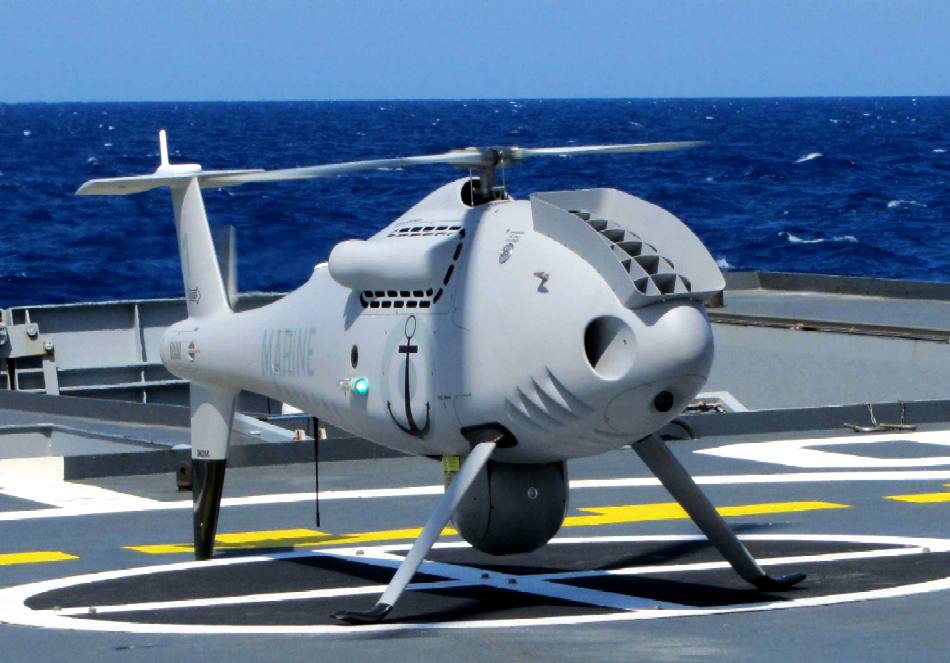
UAVs
FOR WARSHIPS
Seeking to enhance its surveillance capabilities on its warships, the Indian Navy (IN) has now
(March 2015) announced a global competition for procuring ‘Ship-Borne Unmanned Aerial Vehicles’
(UAVs) that can augment various patrolling and search-related tactics on its vessels. The IN currently operates two squadrons of
UAVs, but they are land-based platforms operating from naval air stations in Gujarat and Kerala.
The Request for Information (RFI), issued by the Directorate of Naval Air Staff (DNAS) last month seeks 50 Naval Shipborne Unmanned Aerial System (NSUAS) for Intelligence, Surveillance and Reconnaissance (ISR) and monitoring of Sea Lines of Communication (SLOC), Exclusive Economic Zone safety,
anti-piracy and anti-terrorism functions along with Search and Rescue (S&R) roles, naval officials said. At present, the IN operates two squadrons of Israeli-origin Heron and Searcher Mk.II
UAVs at the Indian Naval Air Station (INAS) 342 at Kochi and INAS 343 at Porbandar in Gujarat.
“However, the smaller UAVs launched from ships increases the vessels’ surveillance range. They also enhance the ship’s communication with other friendly vessels by relaying signals, especially from the Rukmani, the dedicated naval communications satellite. It is part of a larger intertwining communications network in a naval manoeuvre coordinating with other aircraft, ships and satellites.
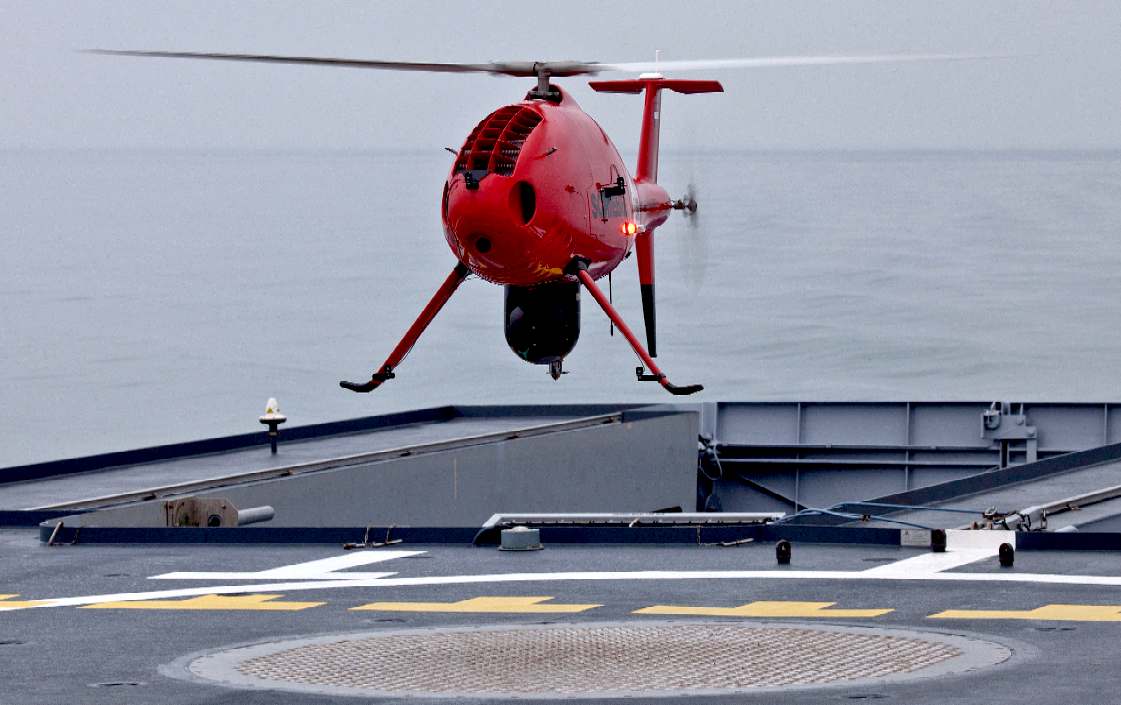
SCHIEBEL CAMCOPTER S-100 – COMPLETES SUCCESSFUL FLIGHT TESTS IN GPS DENIED ENVIRONMENT
July 6, 2013 - Schiebel successfully concluded a series of flight trials with EADS Astrium’s Pseudolite-based Local Positioning System “DeckFinder”, expanding its automated launch and recovery capability for
operations where access to GPS has been denied.
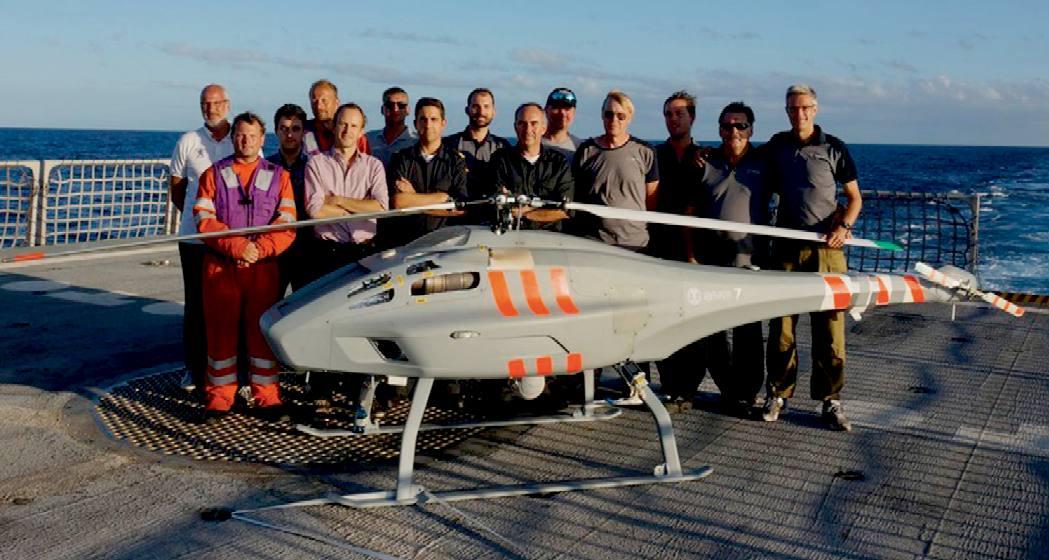
SAAB
SKELDAR - This marine UAV is being used by the Spanish Navy. So far
not one of the systems being deployed is autonomous in terms of energy
endurance. It will be some time before renewable energy plays any part in
naval operations.
An important function is also to track the trajectories of friendly missiles towards their targets,” explained an IN source. One such NSUAS was also tested here when the Austrian make Schiebel S-100 Camcopter being launched from an Indian Coast Guard ship a few years ago.
While the RFI does not specify the type of ‘recovery’ provision — whether ‘assisted’ or ‘auto’ for the UAV — it does stipulate that the craft should also be capable of operating from ashore, although it is primarily intended to be controlled from ships. According to defence industry sources, Boeing firm Insitu is one of the interested companies, looking forward to pitch their ScanEagle NSUAS.
Various technical queries in the RFI the interested bidders are expected to answer also includes questions on whether the system’s control can be handed over from one ship to the other and whether the control station can be miniaturised into a ‘stand alone laptop control’, indicating the IN’s needs for a versatile platform.
CHINA DISPUTE 2011
India launched a new naval research centre for warships on Tuesday, part of efforts by the South Asian giant to build its sea defences and counter the perceived threat of China in the Indian Ocean.
Defence Minister A.K. Antony laid the foundation stone for the National Institute for Research and Development in Shipbuilding (NIRDESH) in the southern state of Kerala, which will be built at a cost of six billion rupees (133 million dollars).
The facility, which will be up and running in two years, will help develop technology for "drawing board to delivery" of warships for India, a naval official said.
The Kerala unit will work independently of the national Defence Research and Development Organisation, with the aim of reducing India's dependence on military imports, which mostly come from Russia.
The 136-vessel navy said in a statement that NIRDESH would ensure India's maritime security.
"This would empower Indian navy, coastguard and other maritime security agencies in a manner befitting the country's stature and influence in the region," it said.
The facility would "ensure that the country would be self-reliant in this crucial area of defence technology," Antony added.
New Delhi is wary of growing Chinese influence around the Indian Ocean, where Beijing has funded or plans to invest in major infrastructure projects, including ports in Sri Lanka, Bangladesh and military-ruled Myanmar.
In August, two Chinese warships raised eyebrows in Delhi when they sailed to adjoining Myanmar for a rare visit to promote ties between the two allied countries.
Retired admiral Arun Prakash, a former Indian naval chief, recently warned that the Chinese navy will have more warships than the United States within a decade and urged India to speed up naval procurement.
Analysts say India falls behind China in naval firepower, but the country should strive for supremacy in the strategic Indian Ocean, a vital shipping lane connecting Asia to Europe and the Middle East.
"Just because we cannot compete with China does not mean we do not defend our interests in the Indian Ocean where we want naval supremacy," retired Indian navy rear admiral Raja Menon told AFP.
India has already begun strengthening its military presence in the Andaman archipelago, which lies south of Myanmar, as part of plans to protect its interests in the ocean.
Delhi, which wants to boost its 14-strong submarine fleet, launched its first nuclear-powered submarine in 2009 and has invested in its military shipyards to start building an aircraft carrier and stealth frigates.
It also plans to buy eight long-range maritime spy planes by 2015 besides six Franco-Spanish Scorpene submarines for which orders were placed in 2006.
According to the Stockholm International Peace Research Institute, China's military spending was the second-largest in the world, after the United States, in 2009.
KPMG consultancy firm estimates India plans to spend 112 billion dollars on defence hardware between now and 2016.
India hiked its 2010-2011 military spending by four percent to 32 billion dollars but analysts like Menon warn that the navy's share of 16 percent of the defence allocation is insufficient for funding its expansion plans.
India and China fought a brief border war in 1962 and still have unresolved
territorial disputes.
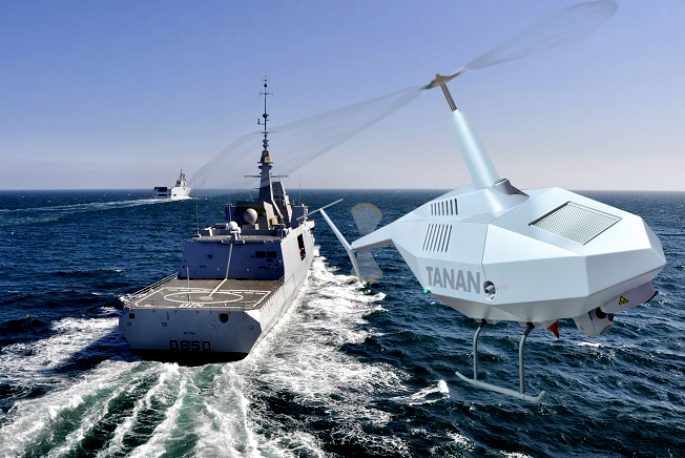
FUTURE ORDERS
The Indian Navy is currently undergoing a 15-year modernisation plan in an attempt to replace older in service equipment. In 2004, India bought the Russian aircraft carrier, Admiral Gorshkov for the equivalent of US$1.5 billion. It cost an additional US$1.5 billion to overhaul the vessel and refit it entirely with new electronic, weapon systems and sensors. The vessel is currently expected to join the Indian Navy at some point in 2013 commissioned as INS Vikramaditya. As part of the project a further US$700 million was spent on the purchase of 12 single-seat MiG-29K and four dual-seat MiG-29KUB fighters and six Kamov-31 maritime helicopters to operate from the new carrier. Additional elements of the project are training facilities for pilots and technical staff, delivery of simulators and spare parts, and establishment and maintenance of Indian Navy facilities. Upgrades to the Vikramaditya include the removing of missile silos from the carrier foredeck to make way for a 14.3-degree ski-jump.
In August 2013, India launched the first of two Vikrant class aircraft carriers. Vikrant, which has capacity to carry 36 fighter planes would go for extensive sea trials in 2016, and is expected to be commissioned by 2018. The phase 1 contract, which included building the hull and fitting of the propulsion system, was awarded by the navy to Cochin Shipyard at a cost of Rs 1,160 crore. The aircraft carried would include Naval LCA and MiG-29K fighters, and Ka-31, and Sea King Mk.42 helicopters. The carrier was originally expected to be commissioned by around 2012-13, however construction was delayed by 4 years, and the carrier is now expected to be commissioned by 2017 or
2018. The delay in the construction schedule has impacted the construction schedule of the second indigenous aircraft carrier (IAC-II) as
well. The IAC-II has not been ordered, but it is planned to displace around 65,000 tones, and is expected to be delivered to the navy by around 2025. The navy aims to have three aircraft carriers in service, with two fully operational carriers and the third in refit. The long term plan was recently revealed by the Navy and shows a road-map to a blue-water navy with six aircraft carriers in service.
The navy is acquiring the Kolkata-class destroyer, the Kamorta-class corvette and the Project 17A-class frigate. Bids have been floated for eight mine countermeasure vessels (MCMVs), to replace the Pondicherry class ocean minesweepers in service. Six of the craft will be produced at Goa shipyard.
In November 2011, India's Defence Acquisition Council was looking for induction of large amphibious ships which they refer to as Multi-Role Support Vessel. It's speculated that they accordingly issued an international RFP for up to 4 amphibious operation vessels (most probably LHDs) with significant capability to carry Helicopters and troops. First the Indigenous Shipyards were consulted but since they have no experience in developing such type of vessels and had no design to propose, Indian government expects candidates from foreign allies.
The Indian Navy has signed a deal with Boeing to supply twelve P-8 Poseidon Anti Submarine Warfare/Maritime Surveillance Aircraft.[ The first aircraft was delivered on 21 December 2012. Boeing will hand over another two in 2013 and the remaining five by 2015. Also there are plans to induct four AEW&C aircraft that will be based on carriers. The RFP (request for proposal) for six MRMR aircraft with anti-submarine warfare (ASW) capabilities was issued on 11 July 2008. The contract is expected to be signed in 2011 and deliveries to begin by 2012/2013. The Navy is also planning to purchase more UAVs. The Indian Navy has issued a tender for procurement of 16, multi-role naval helicopters to AgustaWestland, EADS and Sikorsky. The order is likely to grow to around 60 helicopters. The helicopters will be equipped with anti-ship and
anti-submarine warfare equipment including missiles and torpedoes, and also be capable of being in-flight refuelling. The type will operate from both naval vessels and land bases.
Indian Navy is also envisaging a new 'Safety Organisation' to improve safety of its warships, nuclear submarines and aircraft in view of its planned increase in fleet strength over the next decade.
MARCH
2015 - INDIAN NAVY TO BUY 50 SHIP BOURNE DRONES
In a move to enhance its surveillance capabilities on its warships, the Indian
Navy (IN) has announced a global competition for procuring
‘Ship-Borne Unmanned Aerial Vehicles’ (UAVs) that can augment various
patrolling and search-related tactics on its vessels.
The Navy is planning to acquire a total of 50 shipborne drones for
intelligence, surveillance and reconnaissance missions as part of its
effort to boost maritime security, says a report in PTI. "We want
to have such a capability and want to know what kinds of products are
available in the market," defence sources said.
At present, the Navy operates two squadrons of Israeli
Heron and Searcher Mk-II UAVs which are based in Kochi and Porbandar.
The Naval force had recently issued a request for information (RFI)
seeking details about naval shipborne unmanned aerial system (NSUAS). It
feels that with such drones, the range of the machines can be increased.
Boeing firm Insitu, which has had preliminary conversations about the
ScanEagle with India for a few years now, continues with the pitch. A
prospective competition could include the Airbus Tanan and Textron
Aerosonde as well.
The smaller UAVs
launched from ships increases the vessels’ surveillance range. They also
enhance the ship’s communication with other friendly vessels by relaying
signals, especially from the Rukmani, the dedicated naval communications satellite.
It is part of a larger intertwining communications network in a naval
manoeuvre coordinating with other aircraft, ships and satellites.
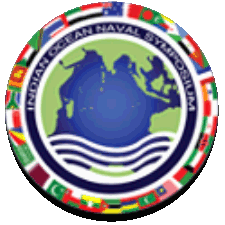
IONS
- INDIAN OCEAN NAVAL SYMPOSIUM
The ‘Indian Ocean Naval Symposium’ (IONS) is a voluntary initiative that seeks to increase maritime co-operation among navies of the littoral states of the Indian Ocean Region by providing an open and inclusive forum for discussion of regionally relevant maritime issues. In the process, it endeavours to generate a flow of information between naval professionals that would lead to common understanding and possibly cooperative solutions on the way ahead.
That the launch of so important a regional initiative was able to meet with such wide acceptance across the length and breadth of the Indian Ocean was in itself a unique phenomenon. There are 35 members - navies of the IONS which have been geographically grouped into the following four sub-regions:-
South Asian Littorals - Bangladesh, India, Maldives, Pakistan, Seychelles and Sri Lanka
West Asian Littorals - Bahrain, Iran, Iraq, Kuwait, Oman, Qatar, Saudi Arabia, UAE and Yemen
East African Littorals - Comoros, Djibouti, Egypt, Eriteria, France, Kenya, Madagascar, Mauritius, Mozambique, Somalia, South Africa, Sudan and Tanzania
South East Asian and Australian Littorals - Australia, Indonesia, Malaysia, Myanmar, Singapore, Thailand and Timor Leste
Distinguishing Features of IONS
- The IONS is a maritime security construct on similar lines as the WPNS. Whilst the WPNS is for the region of Asia-Pacific, the IONS addresses the Indian Ocean Region.
- IONS is a voluntary initiative that seeks to increase maritime co-operation among navies of the littoral states of the Indian Ocean Region by providing an open and inclusive forum for discussion of regionally relevant maritime issues and, in the process, endeavours to generate a flow of information between naval professionals that would lead to common understanding and possibly agreements on the way ahead. The inclusiveness of this forum means that all the principal maritime agencies of states in the IOR are members, unless they desire otherwise, thereby involving participation by almost all the littorals in the region to address cooperative maritime issues.
Principal Objectives for the IONS Construct
- To promote a shared understanding of the maritime issues facing the littoral nation-states of the Indian Ocean and the formulation of a common set of strategies designed to enhance regional maritime security.
- To strengthen the capability of all littoral nation-states of the Indian Ocean to address present and anticipated challenges to maritime security and stability.
- To establish and promote a variety of trans-national, maritime, cooperative-mechanisms designed to mitigate maritime-security concerns within the Indian Ocean.
- To develop interoperability in terms of doctrines, procedures, organisational and logistic systems and operational processes, so as to promote the development of regional naval capacities for speedy, responsive and effective Humanitarian Assistance and Disaster Relief (HADR) throughout the Indian Ocean region.
http://ions.gov.in/
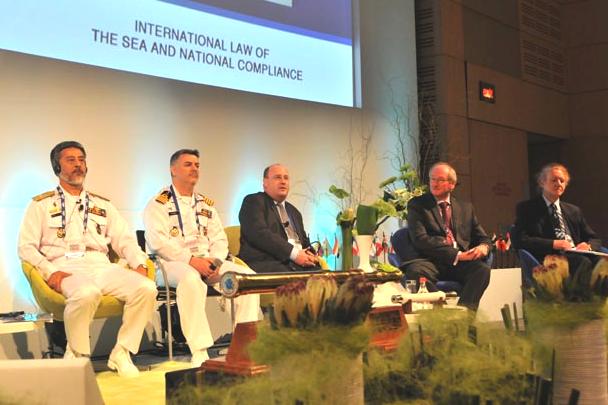
CONTACTS
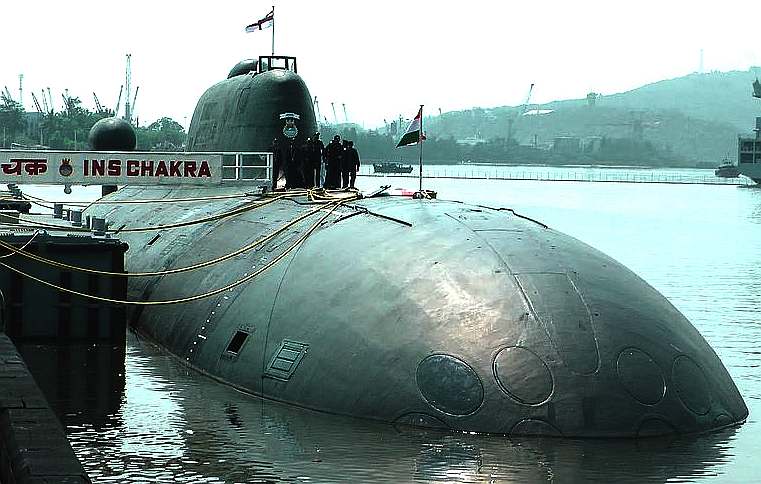
INS
Chakra, Akula class nuclear powered submarine
LINKS
& REFERENCE
http://ions.gov.in/ http://indiannavy.nic.in/ http://www.aircraftcarrier.name/india/ http://en.wikipedia.org/wiki/Indian_Navy http://www.spacewar.com/reports/Delhi_seeks_Indian_Ocean_supremacy_with_warship_research_999.html
http://www.dimdex.com/en/warship-display.aspx http://www.npp.com.qa/ 24-Aug-2013
sinking of indian submarine
ACIDIFICATION
- ADRIATIC
- ARCTIC
- ATLANTIC - BALTIC
- BAY BENGAL - BERING
- CARIBBEAN - CORAL - EAST
CHINA
ENGLISH CH
-
GOC - GULF
GUINEA - GULF
MEXICO
- INDIAN
-
IOC
-
IRC - MEDITERRANEAN -
NORTH SEA - PACIFIC
- PERSIAN GULF - SEA
JAPAN
STH
CHINA - PLASTIC
- PLANKTON - PLASTIC
OCEANS - SEA
LEVEL RISE - UNCLOS
- UNEP
WOC
- WWF
AMAZON
- BURIGANGA - CITARUM - CONGO - CUYAHOGA
-
GANGES - IRTYSH
- JORDAN - LENA -
MANTANZA-RIACHUELO
MARILAO
- MEKONG - MISSISSIPPI - NIGER - NILE - PARANA - PASIG - SARNO - THAMES
- YANGTZE - YAMUNA - YELLOW
|
